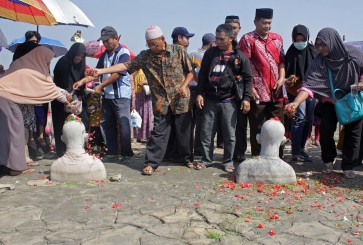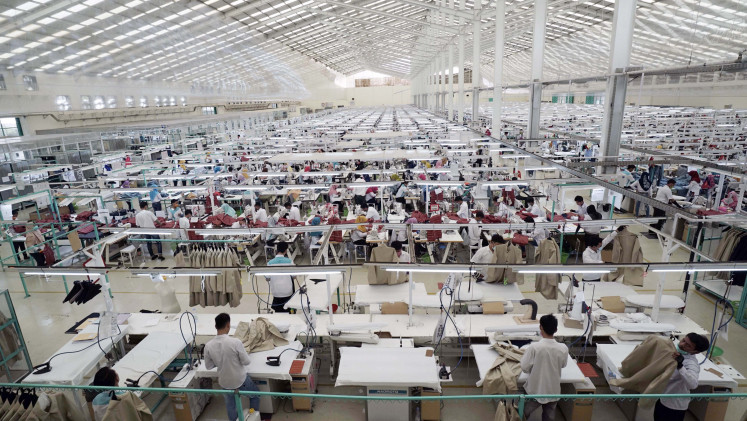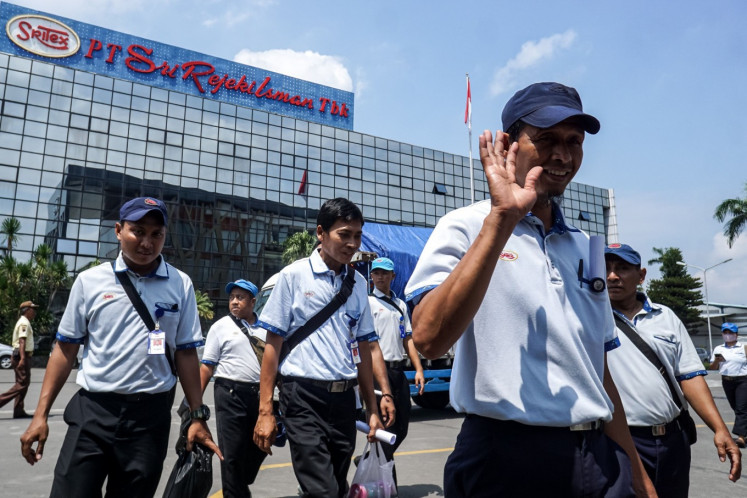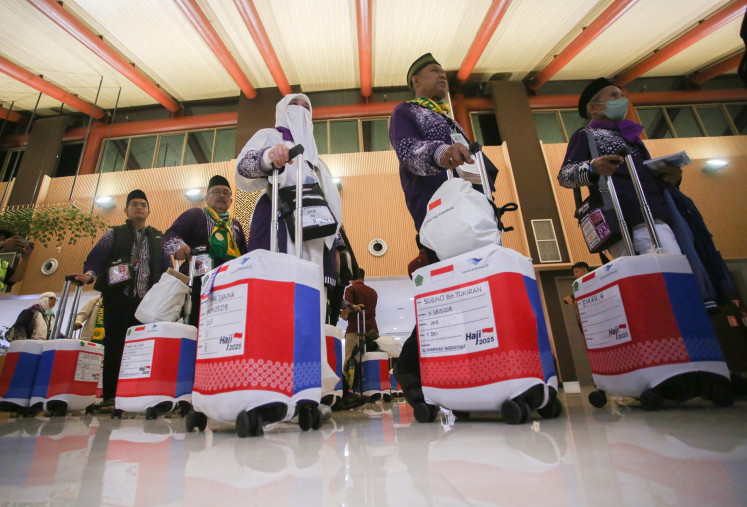Multidimensional poverty: Peeling off poverty layer by layer
In an evidence-based policy framework, poverty reduction based solely on monetary calculations dwarfs the definition and scale of poverty itself.
Change text size
Gift Premium Articles
to Anyone
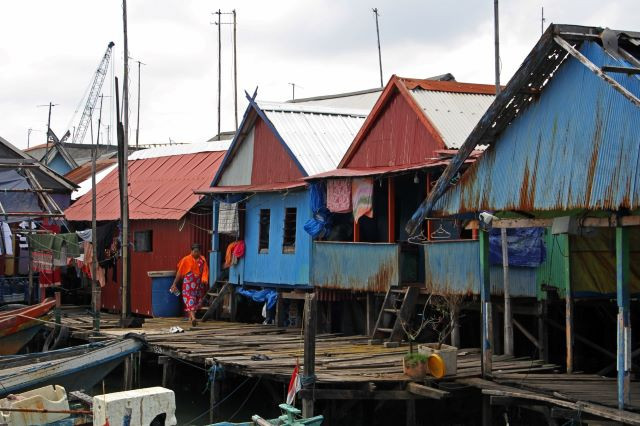
T
he complex nature of poverty is disregarded when policies solely rely on static monetary measurements. Take the case of Widati, a single parent who lives in Jakarta and has to care for her child with a cognitive disability while looking after her two elderly in-laws. They reside in a house provided by her parents-in-law with decent housing materials.
Due to the intensive care and supervision her child requires, Widati cannot work outside her home. She must also cover the costs of her child's tuition and daily transportation to attend a specialized school, amounting to Rp 1 million (US$66.85) per month.
Unfortunately, she is not eligible to receive social assistance because her daily expenses and housing conditions exceed the average poverty standard in Indonesia. Widati can only rely on the income generated from her small grocery shop and occasional gifts from others to make ends meet.
This case taken from the Prakarsa research may be happening all around our neighborhoods and is the reason for the urgency why the poverty rate’s measurement standards and methodologies are vital and must be scrupulous.
Recently, the World Bank recommended that Indonesia adjust the definition of poverty to match its income status. Therefore, as a prospective upper-middle-income country, Indonesia must move up to the most up-to-date fashion: $3.2 a day or Rp 30,064 on purchasing power parity basis (PPP). Nevertheless, the current threshold of Indonesia’s extreme poverty in the 2011 PPP standards remains at $1.9 or Rp 17,851 per person daily. It has been unchanged for over a decade, capturing only the increase in purchasing power rather than a normative rise in the standard of living.
In addition to underestimating and capturing inaccurate poverty, lower standards also exclude vulnerable groups in the higher middle class to be identified so that government interventions for them do not even exist.
Using the new poverty standard, according to Finance Minister Sri Mulyani Indrawati, the poverty rate would rise to 40 percent. But this seemed a little exaggerated.
The World Bank report estimated that based on the new $3.2 (2011 PPP) standard the poverty rate would increase only to 44 million or 16 percent of the population in 2022. This is a significant decrease from the 2002 figure of 61 percent calibrating the new standard.
Some economists then agree that it is necessary to adjust this poverty line, although it can be lower than the new recommended standards. The main message is that the move would change the number of people in poverty and their profile by including more people outside agriculture.
Moreover, calculating poverty using the poverty line standard based on individual expenditure per se is now considered insufficient. In an evidence-based policy framework, poverty reduction, based solely on monetary calculations, dwarfs the definition and scale of poverty itself.
Since monetary poverty is highly dynamic, targeting antipoverty programs will be challenging to be accurate and timely. The implication is that many people, like Widati, and families who suffer different kinds of poverty at different times might be excluded from the government’s poverty alleviation antipoverty programs.
As a multidimensional problem, poverty ideally needs to be quantified and addressed simultaneously and continuously. Since its inception in 2010 by the Oxford Poverty and Human Development Initiative (OPHI), global multidimensional poverty includes dimensions of education, health and living standards with dozens of indicators. Based on each indicator used, a cut-off separates whether or not individuals are poor, referring to the applicable standards. Then the number of individuals in a multidimensionally impoverished population can be statistically seen when this is accumulated.
Using the OPHI methodology and a national socio-economic data survey by Statistics Indonesia (BPS), The Prakarsa has researched the multidimensional poverty index (MPI) thrice since 2012.
The research focused on analyzing various dimensions of poverty, including health, education and basic services.
In 2022, the most recent study was conducted, scheduled to be published the next July, and divided basic services into standard basic services, housing and social protection. The study not only offered more side dishes at the plate but also provided deepened information about where and in what forms of poverty in different parts of the country. Thus, it is a helpful tool for policy makers to formulate more strategic interventions.
Given its functionality, several countries have taken action to adopt multidimensional poverty measurement, aiming to alleviate poverty, efficiently allocate public investment and monitor the progress on Sustainable Development Goal (SDG) 1. One example of this practice is Thailand. The biannual national MPI measurement has influenced policy decisions in areas that contribute significantly to the MPI. For example, it has led to policies like pension reform and the expansion of free internet services.
The government can consider following the footsteps of Thailand and other countries in addressing poverty from multiple dimensions. A recent study conducted by The Prakarsa revealed that Indonesia faces two areas of deprivation: Limited access to clean water and a high morbidity rate.
Consequently, the study suggests that the government should prioritize the development of water supply infrastructure and sanitation facilities, especially in rural areas. This approach would serve a dual purpose, as access to clean water is closely tied to the overall health of communities.
However, it is important to note that adopting a new approach to measuring poverty in Indonesia would lead to a shift in the poverty rate, which could have political implications. While providing evidence is crucial in policy-making, having strong political commitment at the highest level is also essential. Because the current government has yet to incorporate this MPI as a complement to the monetary measurement, the next government should consider doing so.
The MPI will optimize the indirect approach in poverty alleviation, as they are more versatile in capturing pockets of poverty. This is expected to treat the missing middle, prone to fall back into poverty, but is rarely reached by government intervention with strict targeting based on monetary indicators only.
Thus, combining monetary and multidimensional approaches in measuring poverty could involve integrating income- or consumption-based indicators with non-monetary well-being indicators. This allows for a more comprehensive understanding of poverty that considers both material deprivation and non-monetary aspects of poverty.
For good reason, “no poverty in any form” became the first SDG target by the United Nations. Nevertheless, even without a hierarchy between the points, one should imply that poverty alleviation is a top priority and an estuary of other development goal points. Therefore, multidimensional poverty finds its relevance to be used as advanced evidence in formulating poverty.
***
The writers are researchers at The Prakarsa (Centre for Welfare Studies). The views expressed are their own.


